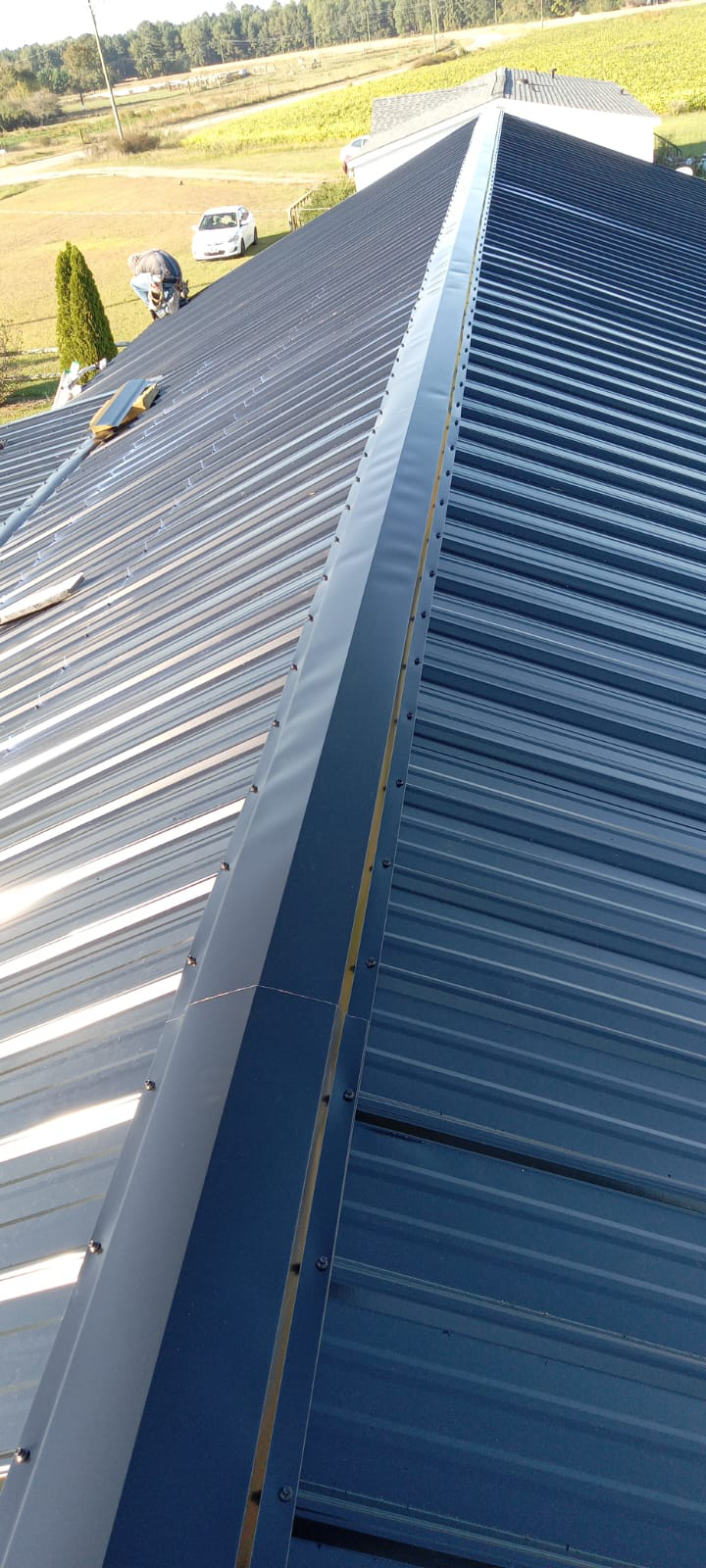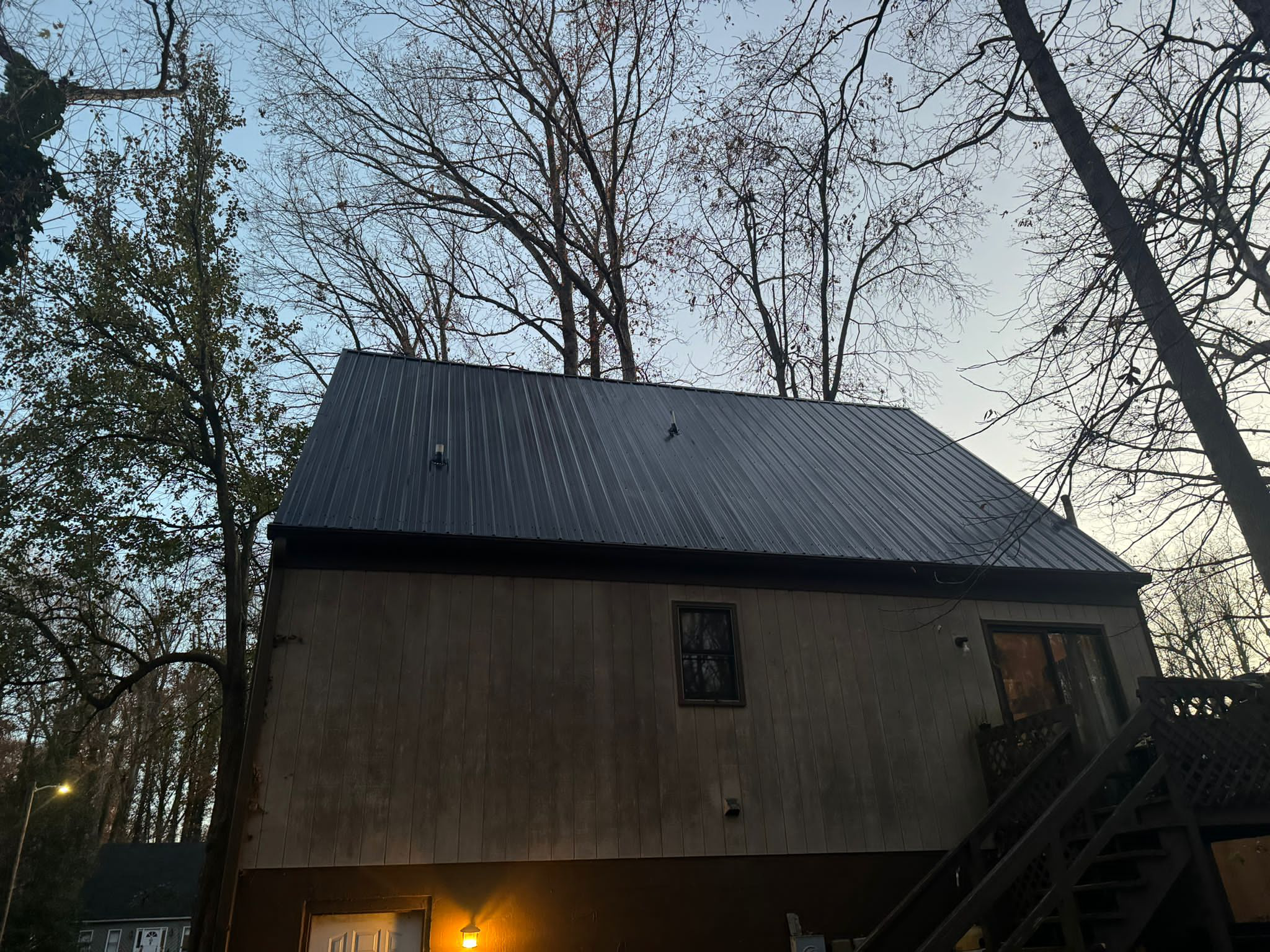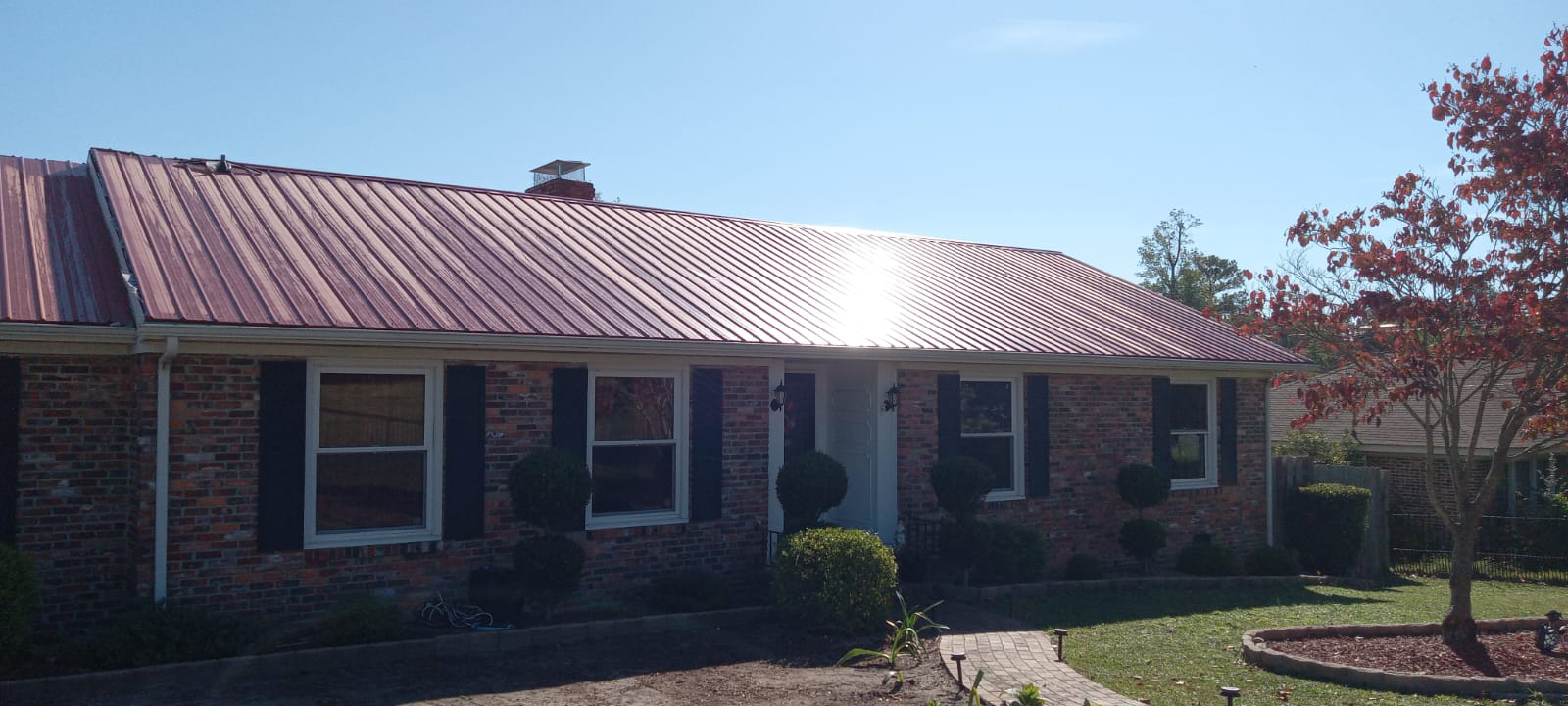Homeowners today are increasingly turning to environmentally friendly alternatives for their homes. One such eco-conscious choice that has gained prominence is metal roofing. Apart from its durability and sleek appearance, metal roofing stands out as a champion in environmental stewardship.
This article delves into the myriad environmental benefits of metal roofing, exploring its recyclability, energy efficiency, and overall sustainability compared to traditional roofing materials.
1. Recyclable
At the core of metal roofing’s environmental appeal lies its exceptional recyclability. Unlike many traditional roofing materials, which end up in landfills, metal roofing materials can be recycled infinitely without losing their integrity.
When a metal roof reaches the end of its long life – often spanning several decades – it can be recycled into new roofing materials. This closed-loop system significantly reduces the demand for raw materials, minimizes waste, and lowers the environmental impact associated with the production of roofing materials.
The recyclability of metal roofing contributes to the circular economy, where resources are reused, recycled, and reintegrated into the production process. This not only conserves natural resources but also reduces the energy required to extract and process raw materials, making metal roofing a frontrunner in sustainable construction practices.

2. Energy Efficiency
Beyond its recyclability, metal roofing takes the lead in energy efficiency, contributing to both reduced energy consumption and lower greenhouse gas emissions.
Metal roofs, especially those with reflective coatings, can reflect a significant portion of the sun’s rays. This reflective property minimizes the absorption of solar heat, keeping homes naturally cooler. In warmer climates, this translates to lower cooling costs, reduced reliance on air conditioning, and decreased energy consumption.
Consider a scorching summer day in Tennessee– the sun beating down relentlessly. Homes with traditional roofing materials absorb and trap much of this heat, causing interior temperatures to soar. In contrast, metal roofing acts as a shield, reflecting a substantial amount of solar radiation and preventing excessive heat buildup. This not only enhances indoor comfort but also contributes to a more energy-efficient home.
Moreover, metal roofing’s energy-efficient properties align with the Cool Roofing Standards established by various organizations, including the U.S. Environmental Protection Agency (EPA) and the U.S. Department of Energy (DOE). These standards recognize roofing materials that demonstrate high solar reflectance and thermal emittance, promoting the adoption of energy-efficient roofing solutions.
3. Durable
The longevity of metal roofing significantly reduces the frequency of replacements compared to traditional roofing materials. This durability, in turn, contributes to lower resource consumption and waste generation.
Traditional roofing materials, such as asphalt shingles, often have a lifespan of 20 to 30 years. In contrast, metal roofing can last 50 years or more with proper maintenance. The extended life cycle of metal roofing means fewer replacements over the years, reducing the volume of roofing materials entering landfills.
The environmental impact of manufacturing, transporting, and disposing of roofing materials is substantial. By choosing a roofing solution that lasts longer, homeowners indirectly contribute to resource conservation and waste reduction, embodying a sustainable approach to home construction.
4. Lightweight Construction
Metal roofing’s lightweight nature has far-reaching implications for the overall sustainability of a building. From reduced transportation emissions to decreased structural requirements, the environmental benefits of metal roofing extend beyond its surface.
The lightweight nature of metal roofing materials translates to lower transportation costs and emissions. When compared to heavier roofing materials, such as concrete tiles or clay, metal roofing requires less energy for transportation. This reduces the carbon footprint associated with the delivery of materials to construction sites, contributing to a more eco-friendly building process.
The lightweight characteristics of metal roofing also have positive implications for the structural design of homes and buildings. The reduced weight places less stress on the supporting structure, allowing for more efficient and sustainable construction practices. This is particularly relevant in green building initiatives, where minimizing the use of resources and optimizing structural efficiency are key objectives.

5. Weather Resistance
Metal roofing’s resilience against the elements contributes to preventing environmental damage caused by frequent repairs and replacements associated with traditional roofing materials.
In regions prone to severe weather events, such as hurricanes or hailstorms, metal roofing’s durability becomes a valuable asset. While traditional roofing materials may succumb to the impact of hail or high winds, metal roofing withstands such challenges with resilience. This resistance minimizes the need for frequent repairs and replacements, reducing the environmental impact associated with storm-related damage.
6. Resistance to Decay and Mold
Unlike some traditional roofing materials that are susceptible to decay, rot, and mold, metal roofing remains impervious to these environmental challenges. The resistance to decay not only ensures the longevity of the roof but also eliminates the need for chemical treatments and preservatives, further aligning with eco-friendly principles.
7. Solar Panel Compatible
Metal roofing’s compatibility with solar panels positions it as an ally in the transition towards renewable energy sources. The durability and strength of metal roofs provide a robust foundation for solar panel installations.
Many metal roofing systems are designed to be solar-ready, meaning they can easily accommodate the installation of solar panels. Homeowners who prioritize sustainable energy can seamlessly integrate solar technologies with their metal roofs, transforming their homes into self-sufficient energy generators.
By harnessing the power of the sun, solar-ready metal roofs contribute to the reduction of reliance on traditional energy sources, lowering carbon emissions and promoting a cleaner, more sustainable energy landscape.
8. Noise Reduction
When installed with proper insulation, metal roofing effectively dampens external noise, including rain, hail, and other environmental sounds. The noise reduction feature enhances the overall comfort of the home and contributes to a tranquil living space.
Choosing metal roofing for its sound insulation capabilities allows homeowners to create a more peaceful living environment while contributing to the reduction of noise pollution in their communities.

As you kickstart your journey of sustainable living with metal roofing, consult with James Kenton, an experienced metal roofing contractor based in Tennessee. Owing to his commitment to environmentally friendly practices, he can guide you through the process of choosing, installing, and maintaining a metal roof that aligns with your sustainability goals.
Make your home not just a shelter but a testament to responsible living. Contact James Kenton today on Facebook for expert advice on how metal roofing can elevate your home’s environmental impact, contributing to a greener and more sustainable future.
